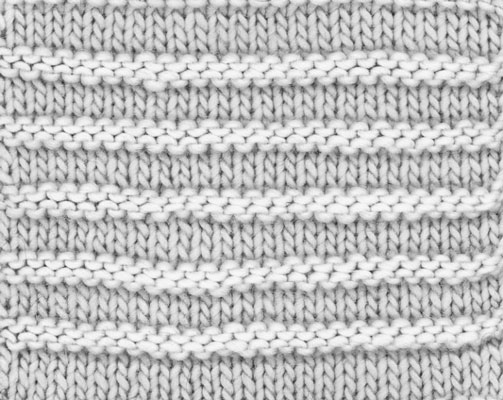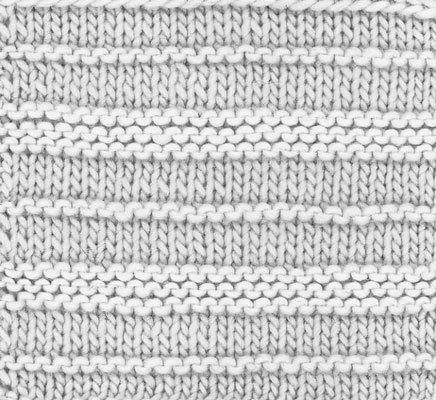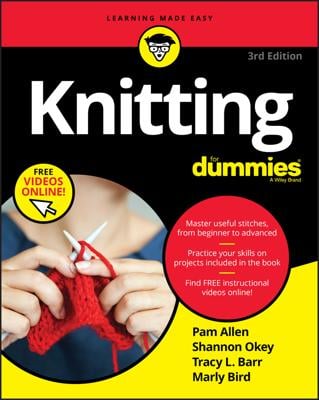-
Vary your stitches: By varying the sequence of knit rows and purl rows, you can create horizontal stripes (sometimes called by their ancient name, welts).
-
Vary the weight and texture of the yarns you use: You can mix and match smooth and fuzzy yarns, shiny and pebbly yarns, and others to create stripes. If your stripes are narrow, you can even work with yarns of different weights as long as the difference isn’t too extreme.

-
Cast on any number of stitches.
-
Rows 1, 3, and 6: Knit.
-
Rows 2, 4, and 5: Purl.
-
Rep Rows 1–6.
To vary the width of your stripes or the space between them, simply increase the number of alternating rows in either the stockinette portion or the reverse stockinette portion.
Garter stitch stripes have a different texture than the stripes made in reverse stockinette stitch. Whereas reverse stockinette stitch stripes create a rolled bump, garter stitch stripes create a flat ridge:
Knit some garter stitch stripes:
-
Cast on any number of stitches.
-
Rows 1, 3, 5–11, 13, 15, and 16 (RS): Knit.
-
Rows 2, 4, 12, and 14: Purl.
-
Rep Rows 1–16.
By alternating knit and purl rows, you create the stockinette stitch. When you work knit rows in succession, you create the garter stitch stripe. To change the width of the background, simply work more or fewer rows in the stockinette pattern; to vary the width of the stripes, simply knit more or fewer rows in succession.

